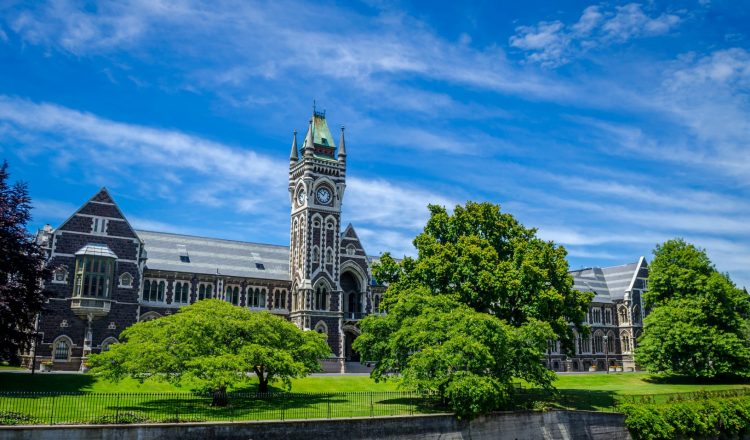勉強する場所
どこに留学するかという問題は、突出した場所がないため、非常に複雑です。留学先を選ぶ際には、多くの選択肢を検討する必要があります。ほとんどの留学エージェントはオークランドへの留学を勧めますが、オークランド以外にも同じように良い選択肢がたくさんあります。
どの学年か
学生が高等教育機関に入学する場合、留学先は当然、高等教育機関のある場所に限られます。高等教育機関が最も多く集まっている都市はオークランドで、その中でもオークランド大学が最大です。他にも大学や専門学校がある都市は数多くあります。
初等・中等教育機関に進学する場合は、ニュージーランド全土でより多くの機会があります。NZQA(New Zealand Qualification Authority, ニュージーランドの資格庁)が学校を規制しているため、どこの学校に行っても同じクオリティの教育を受けることができます。
ニュージーランドの各地域には多くのチャンスがあります。
言語と文化に浸る
学生の目的が地元の文化を体験することであるならば、留学生の数が多くない都市に行くことが理にかなっています。つまり、オークランドは最良の選択ではないということです。留学生の80%はオークランドを選んでおり、中国やインドの言語や文化がキーウィの文化を凌駕している学校もあります。
初等・中等教育レベルでは、ほとんどの学生がオークランドで学んでおり、ウェリントンやハミルトンにも顕著な例があります。
高等教育レベルでは、ダニーデンやパーマストン・ノースなどの都市は、留学生の数が比較的少なくなっています。
ライフスタイル
ライフスタイルの拠点としては、ニュージーランドのほとんどの場所が適しています。オークランドは国際的な都市で多くの店がありますが、それが学生の出身地を彷彿とさせるようであれば、新しい経験ができる場所に行ってみるのもいいかもしれません。
就職活動
高等教育機関で学ぶ学生の多くは、卒業後の就職を心配しています。都市の規模からオークランドが最適だと思われがちですが、現実はそうとは限りません。
まず、地方で学ぶ学生の多くは、現地の言語や文化にどっぷりと浸かっているため、平均して英語力が高く、現地の文化を理解した上で就職活動を行うことができます。
第二に、小規模なコミュニティであるため、学生がネットワークを広げたり、ビジネスオーナーに会ったりする機会が多く、卒業前から企業との関係を持っていることが多いということです。
最後に、地方では競争が非常に少ないということです。都心部にある多くの企業には求人応募が殺到するのに対し、地方の企業では適切な候補者を集めるのに苦労しています。
あなたの関心は?
最も重要なことは、自分の学問的興味に基づいて学校や留学先を選ぶことです。例えば、農業技術の分野で学びたいのであれば、第一にその資格を提供し、第二に農業技術のコミュニティに溶け込んでいる大学に進学するのが理にかなっています。
ディサイル(Decile) 1-10
高校生の生徒をニュージーランドに送ることを選択した多くの親御さんによくある誤解は、ディサイル・グレード(学生の経済状況の割合を10段階評価で示す指標)が教育の質と同じであるというものです。これは間違った考えです。
ディサイル・グレードは、1から10までの範囲で、周辺コミュニティの豊かさを表しています。ディサイル・グレード1の学校は、一般的に貧しいコミュニティに属しており、ディサイル・グレード10の学校は、裕福なコミュニティに位置しています。
ディサイルの10段階評価システムは、政府が追加資金を必要とする学校を特定するための手段として確立されました。ディサイル1の学校は、ディサイル10の学校よりも大幅に多くの政府資金を得ることができます。これは、裕福なコミュニティが学校に貢献する余裕があるという前提に立っているからです。
つまり、逆説的に言えば、ディサイル・グレードの低い学校は、ディサイル・グレードの高い学校よりも施設が充実していることが多いのです。
学区(School Zone)
学区は留学生には関係ありませんが、国内学生として入学する場合は、学区を考慮する必要があります。
学区とは、特定の学校を中心とした指定区域のことです。そのエリア内に住んでいる学生は、その学校に通う第一の権利を持つことになります。
希望する学校の学区外に住んでいる生徒でも、その学校に申し込むことはできますが、席の確保はされません。

















































